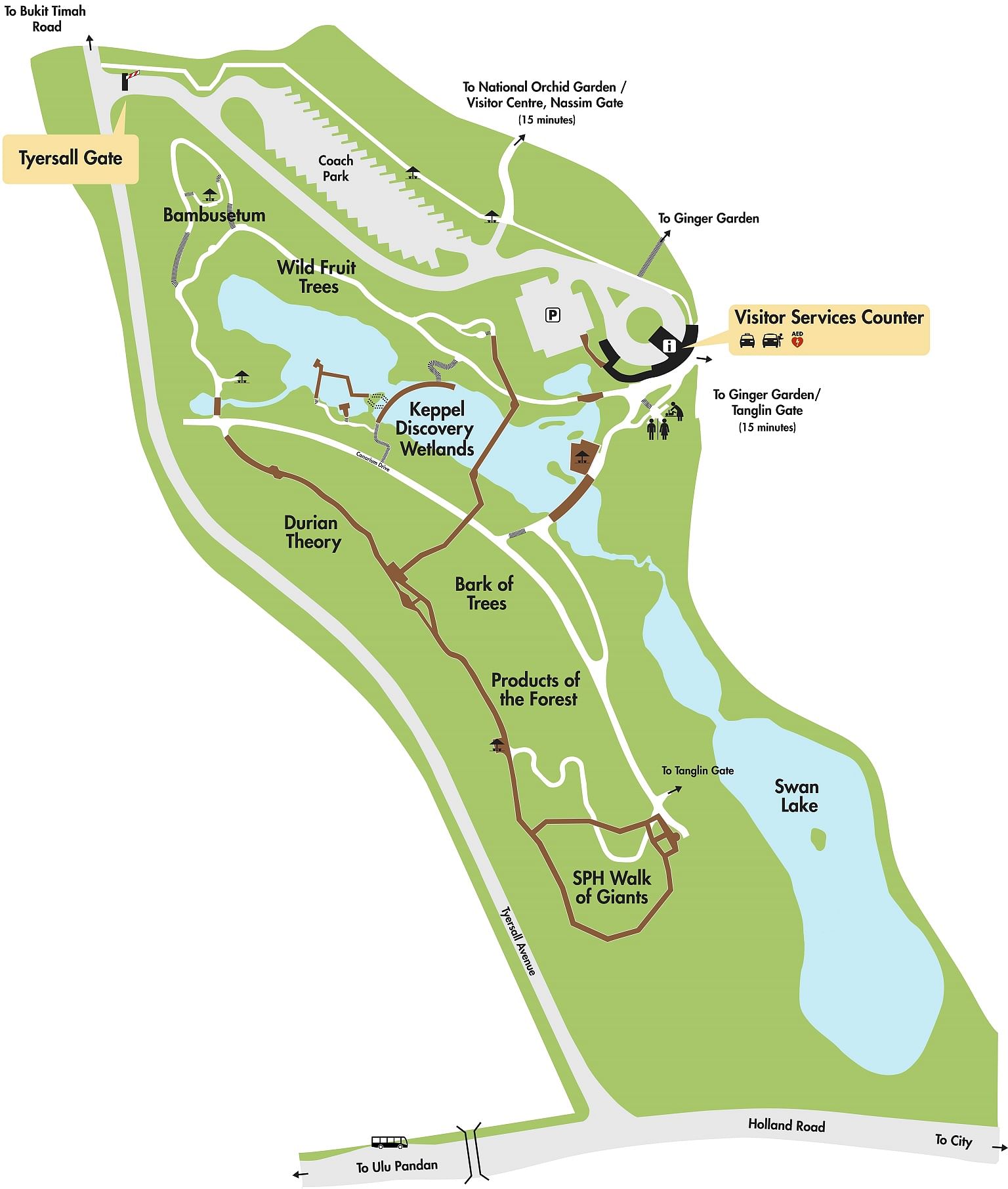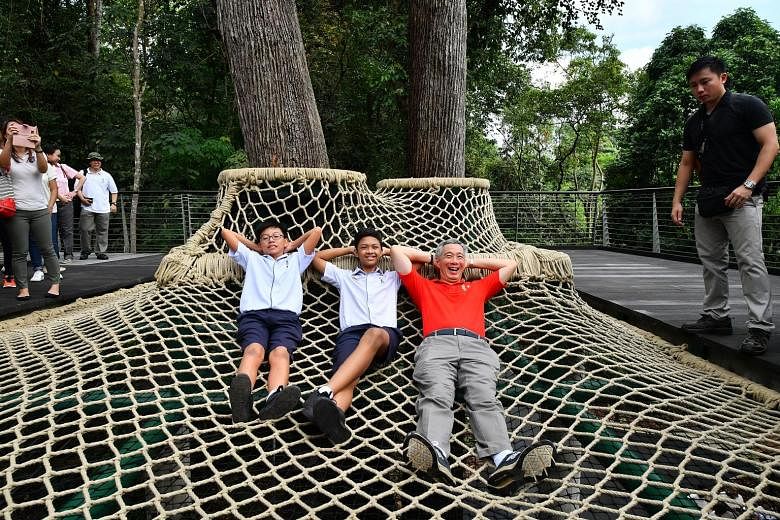For more than 100 years, a wild swampy forest with towering trees grew right next to the Botanic Gardens. Few ventured into the dense marsh.
Now, anyone can walk in the shadows of the giant sentinels with the help of boardwalks, and even lie across a rope bed to gaze into the green canopy above.
Prime Minister Lee Hsien Loong yesterday opened the Jurassic Park-like forest, which will now be part of a larger Botanic Gardens - making it the first botanic garden in the world to incorporate freshwater wetlands and lowland forest.
It is also the only place in Singapore where the public can experience the two habitats together.
Called the Learning Forest, the $30 million project, 21/2 years in the making, will be a new zone for the conservation of rare flora. It is now home to 700-plus species of plants, up from 100 originally.
It could also take some pressure off the inscribed heritage core of the Gardens, which was named a Unesco site in 2015, by spreading visitors across the larger space and creating a buffer against urban developments nearby. The size of 15 football fields, the 10ha Learning Forest more than doubles the rainforest area in the Gardens to 16ha.
Mr Lee said the new attraction builds on the 158-year-old Gardens' legacy of conservation and improvement. He noted: "Planting a garden or forest is the work of decades. Today, the tall trees you see around us are decades, sometimes centuries old. Many of the trees in the Learning Forest are still young. But gradually, year by year, they will grow and mature. In the fullness of time, they will enrich our natural heritage."
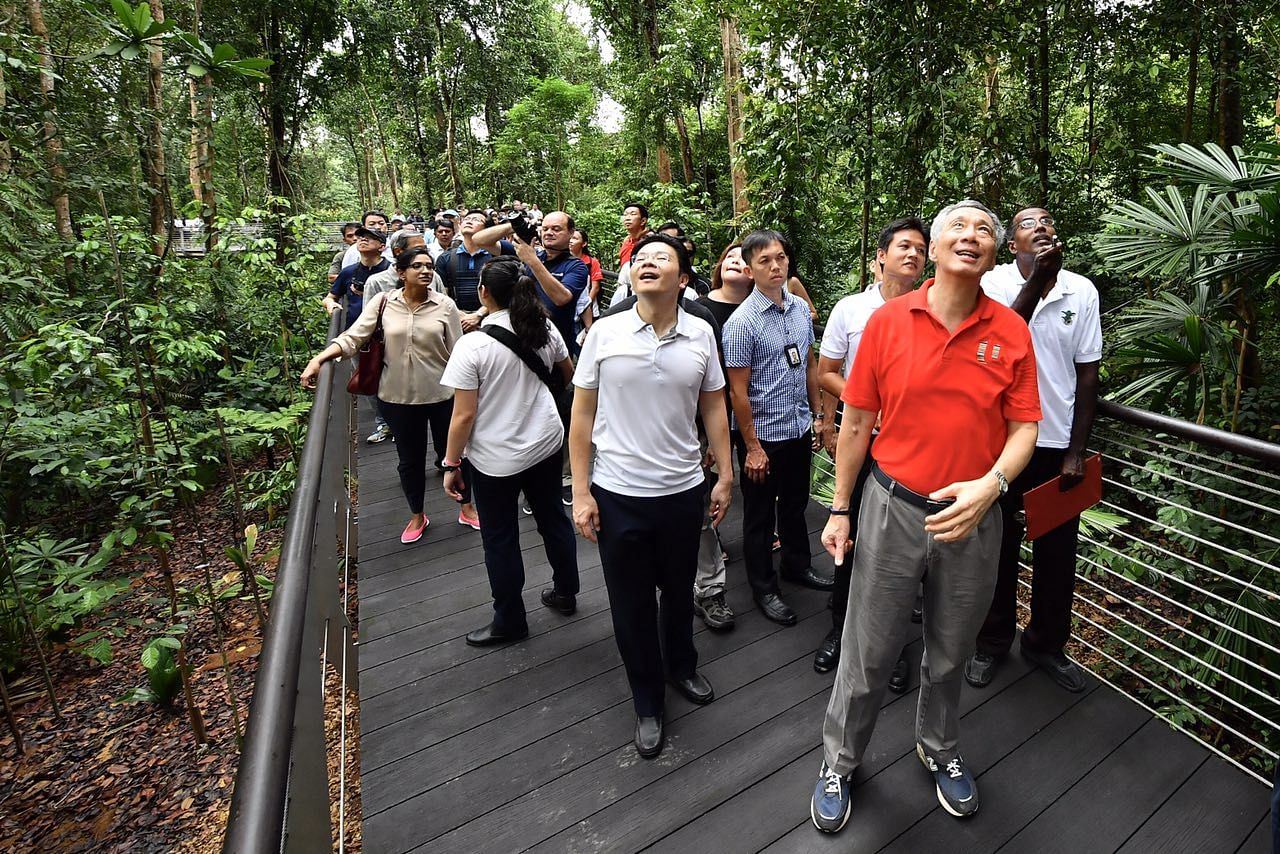
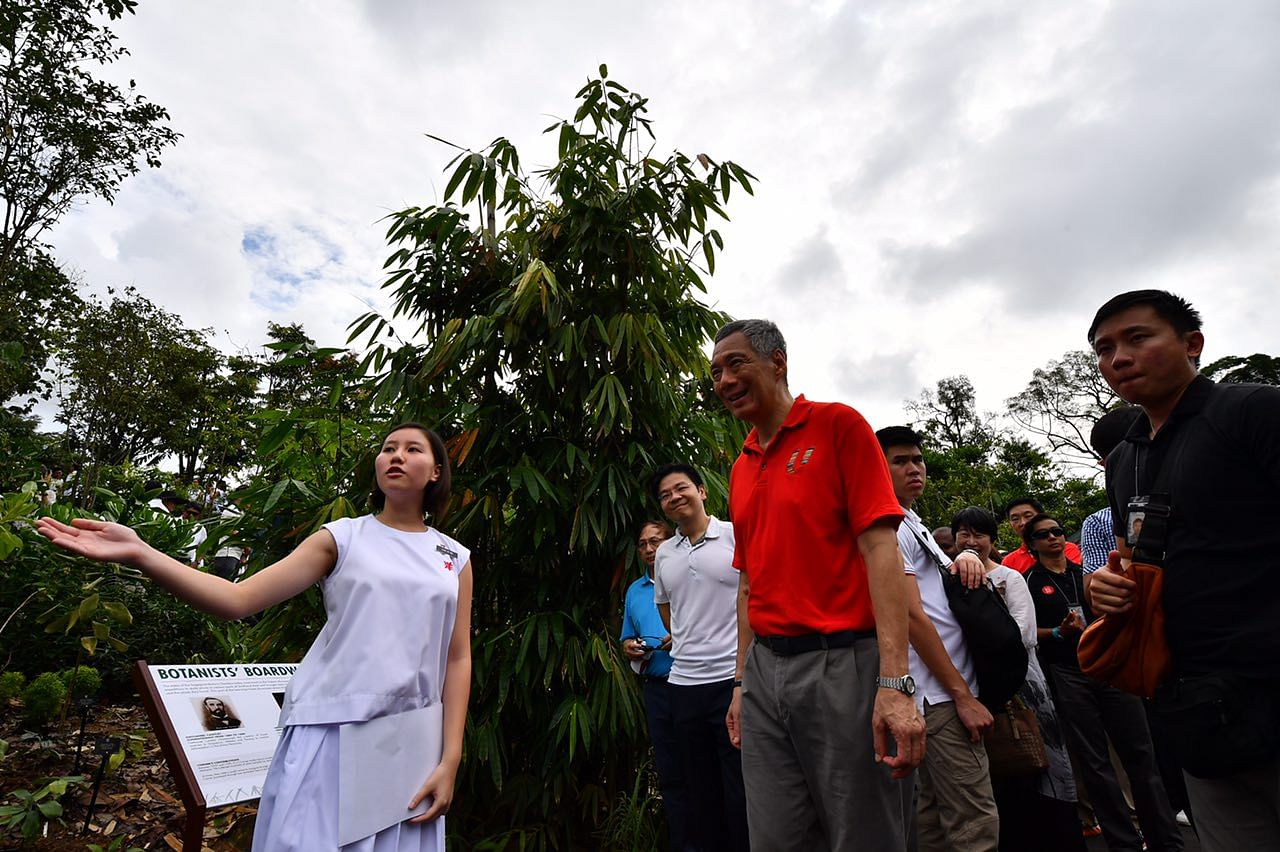
The National Parks Board (NParks) took reference from 19th century maps and geological surveys to shape the space.
Within it lie giant pandans, pulai trees with swollen buttress roots and sandy banks lined with pelawan trees. The forest is also a refuge for animals commonly found in the freshwater wetland ecosystem, such as the Malayan box terrapin, crab-eating frog and stork-billed kingfisher.
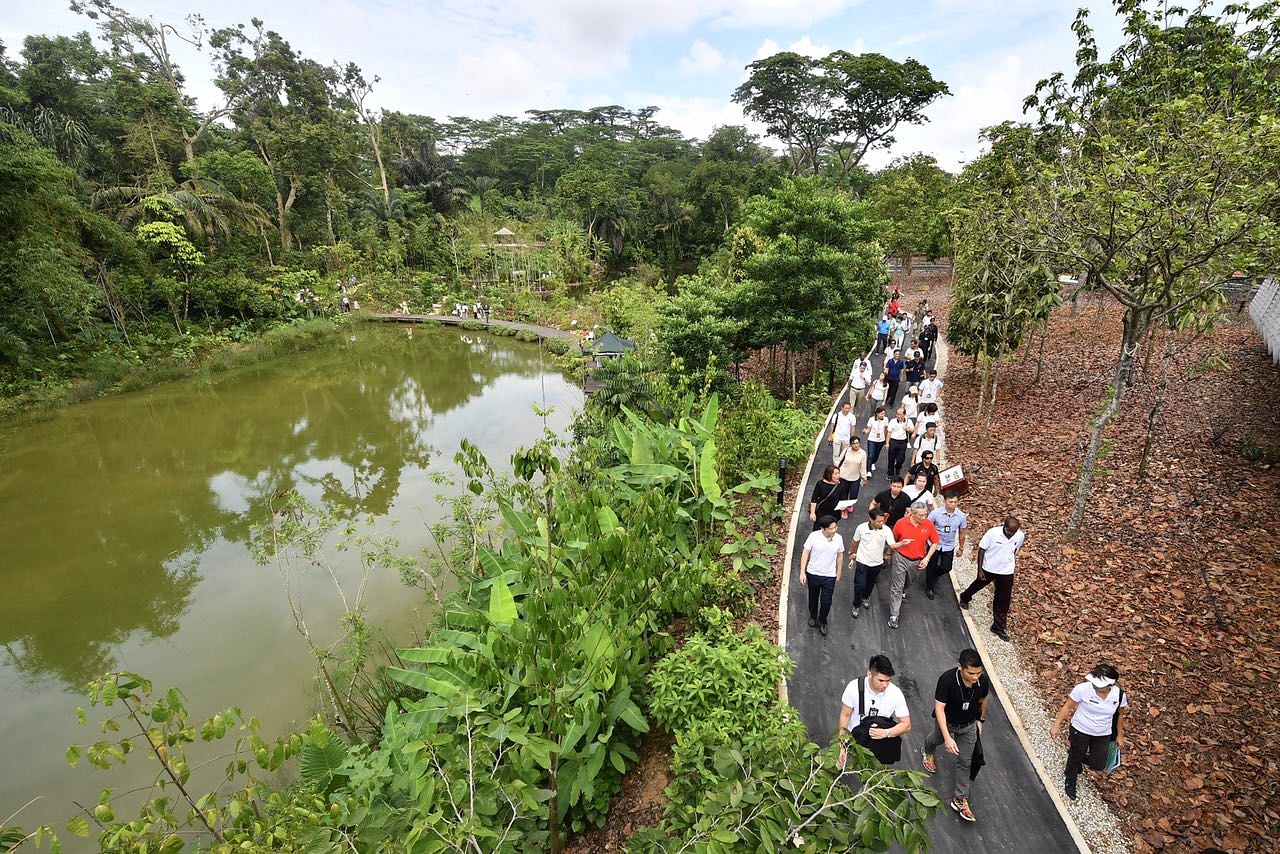
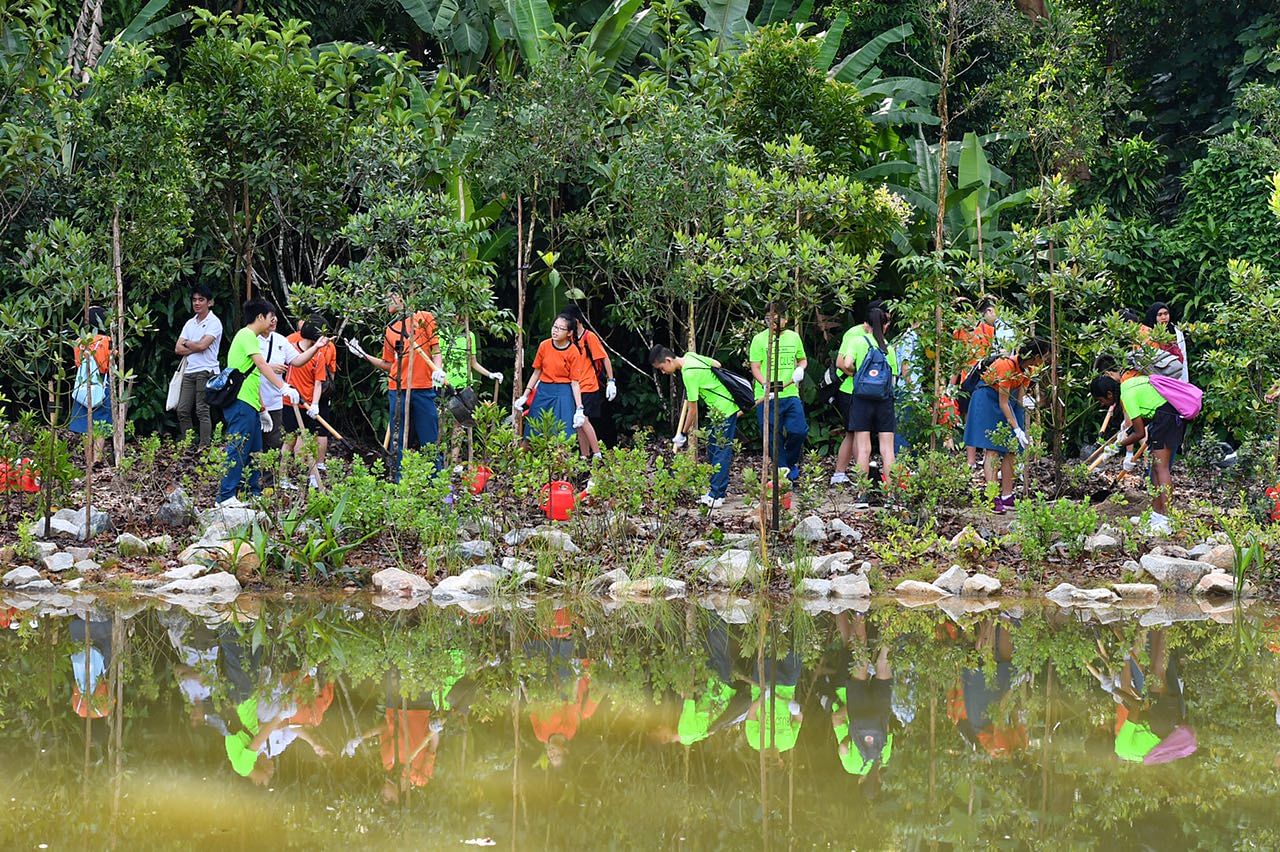
NParks founding chief executive and Gardens by the Bay CEO Tan Wee Kiat told The Straits Times that most botanic gardens in the world are shrinking or closing. He said: "In this case, not only are we expanding, but we are enriching it with a habitat that was here that has a wealth of species that you won't find outside of South-east Asia."
The Learning Forest also has the approval of Nature Society president Shawn Lum, who said it has added diversity to the Gardens while increasing public awareness.
